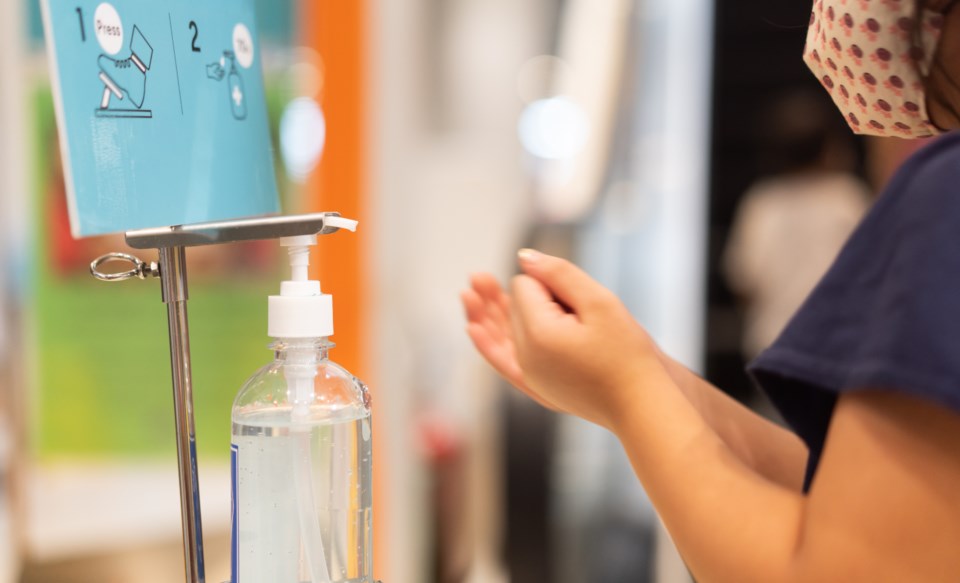York Region's parents and teachers remain concerned about COVID-19 transmission in schools but change could be coming with vaccines for younger children.
The region is facing 13 open school COVID-19 outbreaks — including Newmarket’s Crossland Public School and Newmarket High School — with 46 schools under surveillance. Data suggests transmission remains higher at schools compared to the general York Region population. York Region Public Health said there are currently 65.1 cases per 100,000 population for York’s five to 11 year-olds, compared to 22 per 100,000 in the general population over the last seven days.
Advocacy group York Communities for Public Education co-chair Riya Bhatla said they are encouraged by recent government steps, like increased availability for rapid testing, as well as a potential return to regular semesters. But she said there is more to do.
“To see it’s taken this long for the government to take these steps is honestly quite disappointing,” Bhatla said. “We do have a long way to go. We’re still pushing for smaller classroom sizes, better classroom ventilation, PPE.”
In the face of rising cases, the province instituted a few new measures Nov. 18, including virtual-only parent-teacher conferences, virtual-only assemblies starting in January unless public health units start enforcing that earlier, and restricting lunches/breaks to classroom cohorts when indoors. York Region Public Health has not recently changed guidance but has previously recommended no indoor assemblies and high-contact sports to be allowed outdoors only.
Biostatistician and former Newmarket local Ryan Imgrund found cases in both York Region school boards appear greater than the surrounding community as of Nov. 15: 87 cases per 100,000 students in York District Catholic School Board and 46 for York Region Public School Board, compared to 35 cases per 100,000 for the greater population.
It is a trend he found in 24 school boards, though less so in the GTA, where rising COVID-19 trends have been less pronounced. He attributed it in part to the lack of vaccinations available for younger children. He said getting them access to vaccines could be a "game-changer."
“What we have seen over time, even in the last few months is, there’s been a shift. There’s been more cases in elementary schools,” Imgrund said.
York's director of corporate communications Patrick Casey said while five to 11-year-old cases have spiked, the cases in youth aged 12 to 19 have remained more stable with vaccinations available. Public health is encouraging younger children to get vaccinated, which they can do starting Nov. 26 in York Region, but new measures are not off the table.
“We continue to monitor and assess the situation, and cautious adjustments to measures will be made accordingly to prevent transmission,” Casey said.
Still, some would like to see more robust measures in place at schools. The Public Health Agency of Canada emphasized airborne COVID-19 transmission earlier this month in its guidance. Imgrund said although that should have happened sooner, it puts into question provincial decisions to allow students in different cohorts to eat together in cafeterias, and adds to the importance of getting higher-quality PPE in schools.
“We haven’t seen anything all along in terms of really solid airborne precautions,” Imgrund said. “There’s a layer of what you need. Ventilation and superior masking are part of that layer.”
York Region District School Board has said it is optimizing air quality with ventilation improvements, portable HEPA filters in kindergarten classrooms and those without mechanical ventilation, and ventilating with maximum outdoor air two hours before and after school occupancy. It said it has invited $24.8 million in ventilation improvements and deployed 1,197 standalone HEPA filters. York Region Catholic District School Board said it has implemented similar measures, investing $15.3 million in ventilation improvements with 533 HEPA filters deployed.
Bhatla said she hopes parents get their children vaccinated. She said her organization’s foremost advocacy has been toward ending the hybrid learning model, but their teachers still have concerns about ventilation and protocols.
“It’s a very urgent situation, and people are at risk,” she said.


